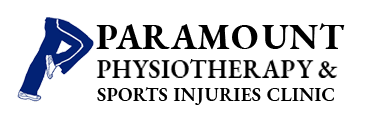Treatment for post-traumatic vertigo at a Brampton head injury rehabilitation center is common after a patient suffers blunt force trauma to the head, neck or cranio-cervical region. The condition often accompanies post-concussive syndrome, which is a wider umbrella of symptoms that covers problems faced with reduced cognitive and emotional functioning. This overview addresses post-traumatic vertigo specifically, including its symptoms, causes and treatment.
What is post-traumatic vertigo?
Post-traumatic vertigo is basically the dizziness that follows a concussion. It can occur with sudden movement (standing up or sitting down), when the head is in a certain position or even when a patient tends to look in one direction for too long. The most common trigger for this dizziness is a change in head position, whether the patient is sitting or lying down.
Post-traumatic vertigo is a result of the head injury dislodging the otoconia, a part in the inner ear. The dizziness arises because the otoconia migrates through the ear, causing a feeling of imbalance. The condition is most common in impacts that lead to unconsciousness and doctors will often gauge its possibility based on how the concussion was sustained.
How is it diagnosed?
Doctors normally diagnose it by reviewing symptoms. Dizziness with sudden movement, confusion and a feeling of spinning often strongly suggest the condition. Laboratory tests, including an audiogram or ENG, along with any MRI or CT scans, can also confirm if the otoconia became detached.
How is post-traumatic vertigo treated?
Treatment depends on the extent of the vertigo, as sometimes it will heal in time. However, if the vertigo compromises life functions or continues for a long time, it is time to form a treatment plan that usually involves lifestyle change, medications and physical therapy. In more severe cases, surgery can be recommended.
Physical therapy focuses on balance, core strength and trusting your senses. Whether you can start this course of treatment depends on the extent of your brain injury and any other injuries you sustained. For example, if you suffered a moderate head injury with no other injuries to your body, you can likely start balance training as soon as possible. Otherwise, you may have to wait for the other injuries to heal.
Are there any other barriers to successful treatment?
Your treatment will require management and adjustment if you also suffer a drop in blood pressure while sitting or standing suddenly, experience vision impairment or endure inner ear issues. Just as any other injuries must be considered, so should any pre-existing conditions. That is why timetables for completing treatment are highly individualized, as they consider the patient’s past and present condition.
If you experience post-traumatic vertigo, it is important that you start visiting a Brampton head injury rehabilitation center for treatment as soon as it is possible for you to do so. You will not only receive sessions in our clinic, but you will likely also have a home exercise program to complete. There may be activity restrictions that will slowly ease as you recover. If you are looking for compassionate and effective therapy that will help you move forward, call Paramount Physiotherapy & Sports Injuries Clinic today to set up an appointment.
